Mental Health, Post Six: Scraping the web for data
By Lina Lindberg
If you search ‘Borderline Forum’ online, the most popular link that appears is a site called ‘Psych Forums’. It Is a place where psychology and mental health are discussed by anonymous people. I favoured this site over other platforms such as Twitter, because the forum allows people to express in depth thoughts and feelings. Whereas Twitter has a word limit and it is not a dedicated space for mental health. As I was researching and investigating Twitter I entered the keyword ‘borderline’ I found that the term is used in situations that is not at all related to the mental health state. Psych Forums provides the searcher with immediate answers by people with the same experience.
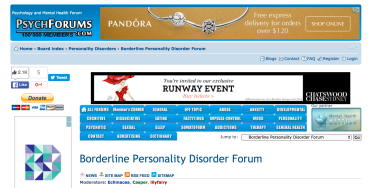

As the user first enters psychforums.com, different navigation buttons appear such as cognitive, dissociative, sexual, abuse, personality etc. Within these topics the user can then continue with different subtopics. On the side bar there are links to social media links such as Facebook and Twitter allowing you to share, tweet or donate. A advertisement next to it says “Ask a Mental Health Expert” – A question is answered every 11 seconds!” At first the website is intriguing and quite confusing as at times it can be hard to navigate, it contains a lot of information and the user is unable to filter published posts. Below is a flowchart (image 1) of the process of searching for borderline on Google to searching within the site.
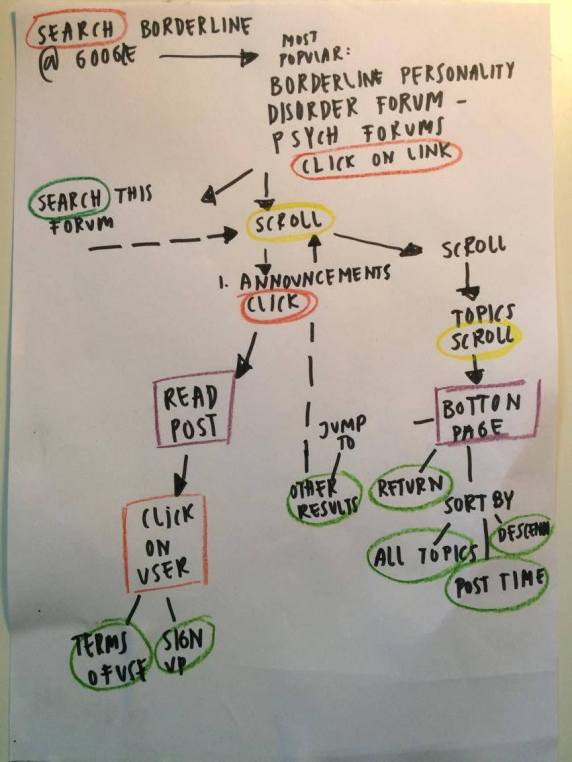
Psych Forums is a complex website, where the ‘announced’ posts are listed at the top of the page. The user can see the views of the post, post replies and what time the writer of the post last posted. By scrolling down the page the user is able to sort by time and topic. I personally believe wayfinding needs to be much easier to access from a usability perspective. Below is a flowchart (image 2) where I have mocked up how the website works if the user could search for a specific word.
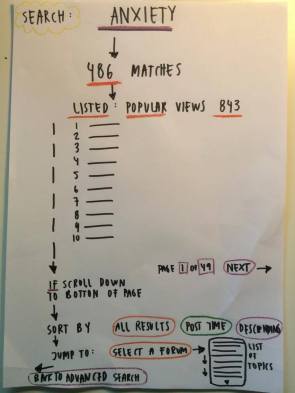
To narrow down my audience and to be able to gain more insight into the results I searched for Borderline Personality Disorder > “Scared” > Search within two weeks.
A thread that I found extremely interesting was under the topic “borderline – the quiet one”. The person who wrote this thread was diagnosed with BPD and is trying to broaden his understanding of it. During his childhood his mother have been passive aggressive and angry at him, so he knows how it feels to be the receiver and will never allow himself to be anything like her. Instead of letting his emotions go, he over controls them by shutting them down. “It is easier that way” he says.
A girl responds to his thread, explaining that she feels less alone reading his post when she knows that other people feels the same. She also inputs that she is often jealous of artists that can express intense feelings but she can’t.
A third person joins the conversation, and it seems like he has a lot of experience within Borderline. He explains that we all are who we are with different bags of history. The solution is not to erase these, they are who we are, instead we need to learn how to add. Allow yourself to feel emotions. It’s okay to be angry. It’s ok to grieve what is lost. Personally, I think this is a very wise way to study emotions and feelings. No one will know what tomorrow will bring, and we can not erase the history or our mental health. We need to deal with it, and it is ok.
The third person recommends anyone to try the “why” method.
“I don’t want to go to work today.” > Why? > “I hate my boss” > Why? > …
The answers do not need to be right, wrong nor complex. By asking ourselves ‘why’ we identify the problem, and we have the answers inside ourselves. This adds understanding, coping skills and trains our brains to learn how to process and regulate our emotions. Below (image 3) I have drawn my understanding of the research that I just conducted as a birthday cake.
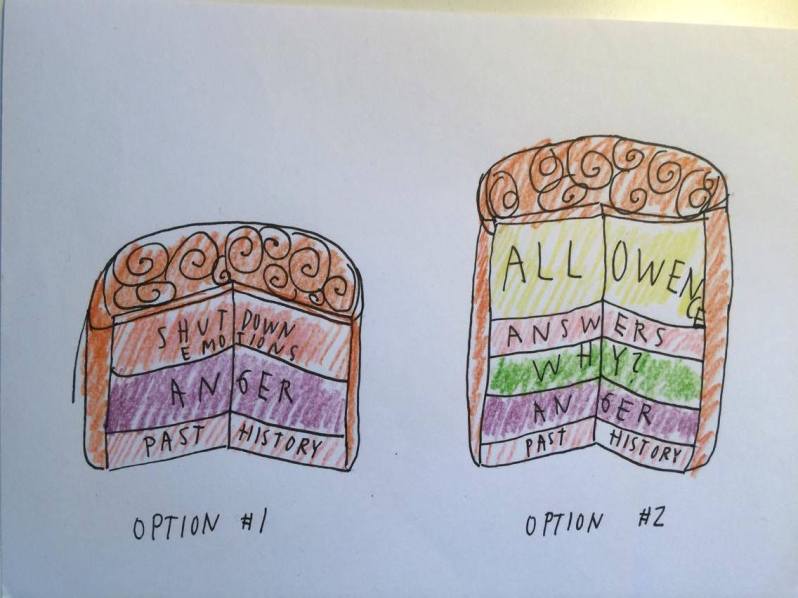
We all have a decision, no matter what mental health, to choose to shut down our emotions or deal with them. These two layered cakes are a visual metaphor of how we decide to deal with the ongoing process of emotions.
My next step to gain more data information was to look at time. By asking the question “What time is the most common to sign up for Psysh Forum?” I could compare the different answers and hopefully see a pattern in my findings. In lack of search fields on the website, I manually wrote down the different times from twenty users.
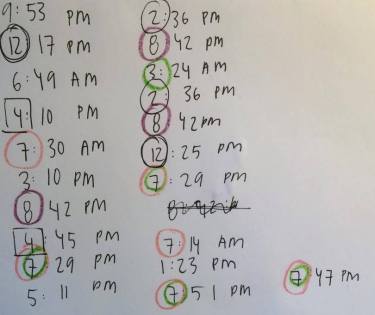
In the founding I discovered that the most common time to sign up is 7pm and 8pm, with nearly half out of the 20 users deciding to join at that time. The other half of the users connected on various times, either afternoon or past midnight.

The founding surprised me, as I thought that most of the user would join later during the night. It made me think about people habits in general, and why early evening is most suitable. Most people would have had dinner by then, and in the zone to respond to mental health issues. For further studies I want to gain more information into how to connect people that is online during the same time. Not only can they start a thread and discuss their issues, they can also go online and talk to someone in the same situation located anywhere in the world.
You must be logged in to post a comment.